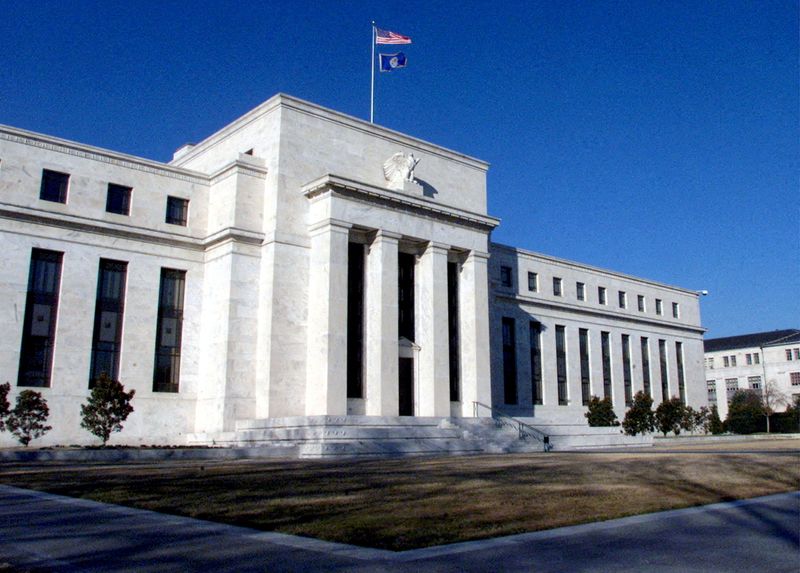By Howard Schneider
WASHINGTON (Reuters) – The U.S. Federal Reserve system is cutting about 300 people from its payroll this year, a small but rare reduction in headcount across an organization that has grown steadily since 2010 as its reach in the economy and regulatory agenda have expanded.
A Fed spokesperson said the cuts are focused on the staff of the U.S. central bank’s 12 regional reserve banks and mainly hit information technology jobs, including some no longer needed because of the spread of cloud-based computer software, and positions connected to the Fed’s various systems for processing payments, which are being consolidated.
The spokesperson, who would not speak for direct attribution, said the staff cuts represented a combination of attrition, including retirements, and layoffs.
According to annual reports and financial documents prepared by the Fed each year, the number of staff budgeted for the system, including its regional banks, the Washington-based Board of Governors, and three smaller units, is due to fall by more than 500 positions from 2022 to 2023, from 24,428 to 23,895.
While small compared to the size of the Fed, it is the first time budgeted headcount has fallen since 2010.
Since actual employment in 2022 fell below budget – a December Fed memo cites “higher than-budgeted turnover and extended lags in filling open positions,” notably in the area of bank supervision, as the reason – the number of positions being eliminated this year is somewhat smaller than the budgeted decline.
The size of any drop in actual employment won’t be known until early next year when the Fed closes its books on 2023 and releases its latest annual report.
While the December memo from the Board of Governors division that oversees the regional reserve banks does not explicitly call for staff cuts, it highlights the need to stick with internal budgeting protocols, “with the most important focal points being alignment with long-term strategy and stewardship of public funds.”
SELF-FUNDED
The staff reductions are happening at a sensitive time for the Fed. It has booked $100 billion in losses in recent months on operations that currently involve paying more in interest to banks on reserve deposits at the Fed than the central bank earns from its roughly $7.5 trillion portfolio of bonds and mortgage-backed securities.
Unlike federal agencies that spend tax dollars allocated by Congress, the Fed is self-funding. Its earnings from its asset holdings and fees charged to banks for a range of services are used to pay the roughly $6.3 billion in annual expenses of a system that employs nearly 24,000 people in Washington and other cities across the country.
In most years the Fed generates a profit that is turned over to the U.S. Treasury. But since the central bank began to increase interest rates to control a surge in inflation, it has been spending more than it earns each year, and in effect gives the Treasury an IOU to be paid later.
While the staff cuts are not directly tied to the Fed’s losses, the central bank’s operations have been under scrutiny among Republicans in Congress who have expressed concern about how deeply the Fed was delving into issues, like climate change and the economics of inequality, that seemed to them to be beyond its monetary policy and bank supervisory missions.
The number of system-wide jobs at the Fed had been falling earlier this century, from just shy of 24,000 as of 2003 to 19,735 as of 2010, as the end of the paper check era allowed the Fed to trim the legions of workers it took to clear and process those documents.
With Congress layering on new responsibilities in the wake of the 2007-2009 financial crisis and recession, the push to modernize and expand the Fed’s role in processing payments, and new financial stability and other initiatives, staffing since then has grown every year, according to annual Fed budget and financial reports filed with Congress.
(Reporting by Howard Schneider; Editing by Dan Burns and Paul Simao)
